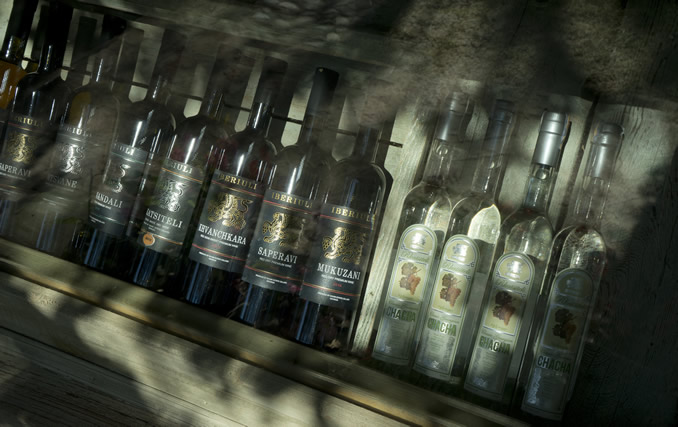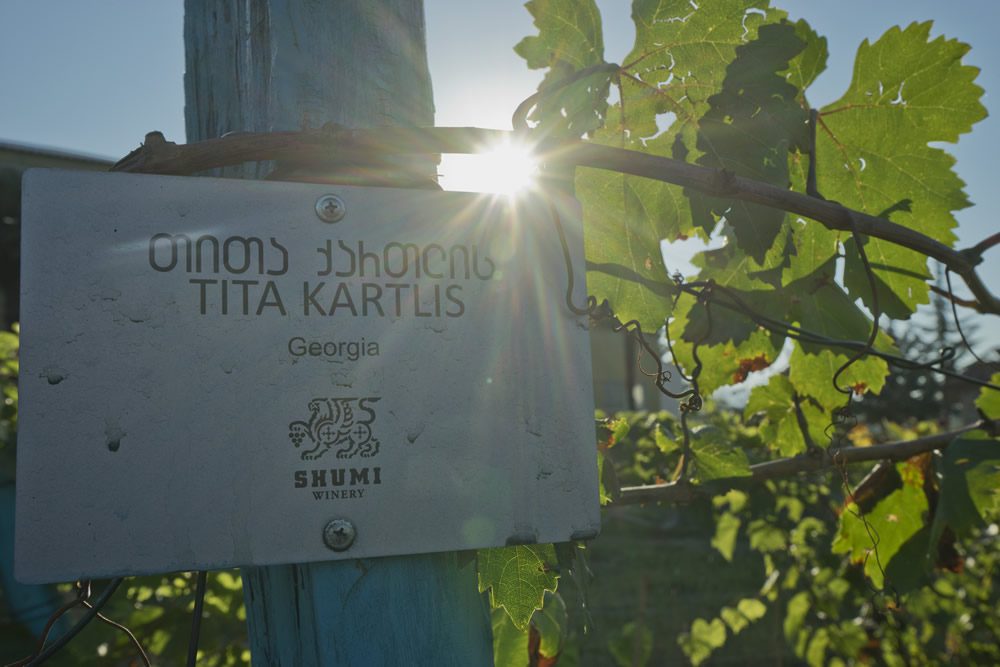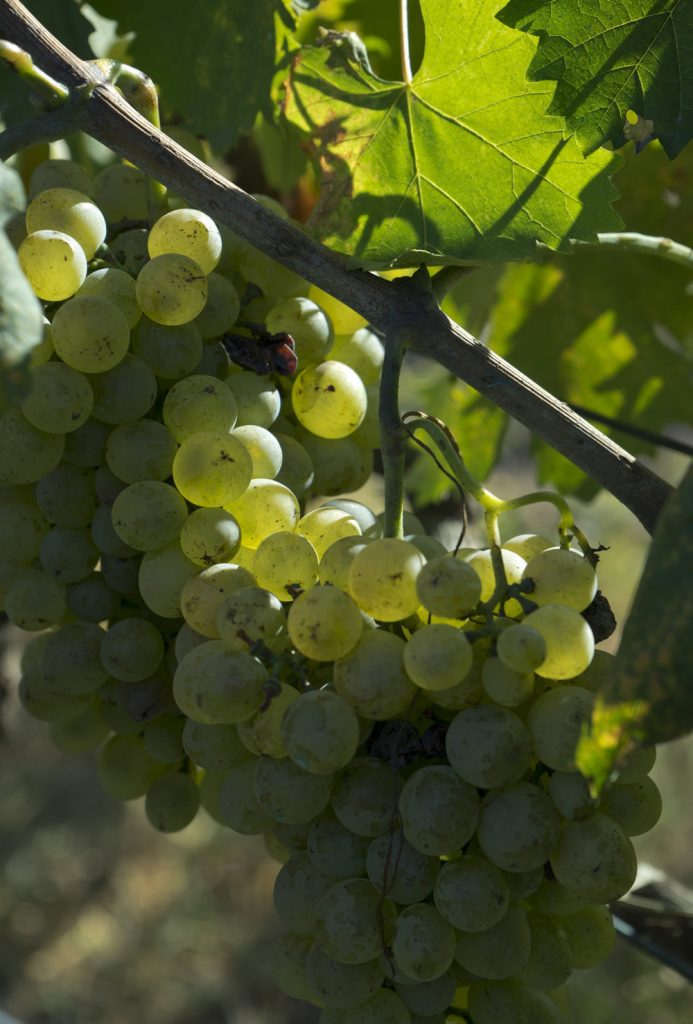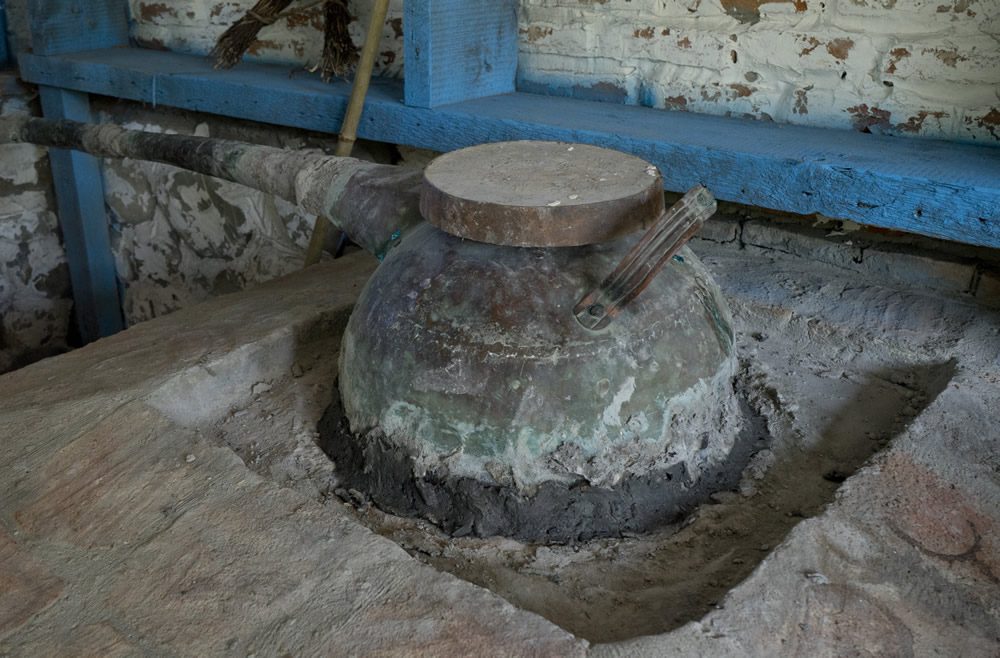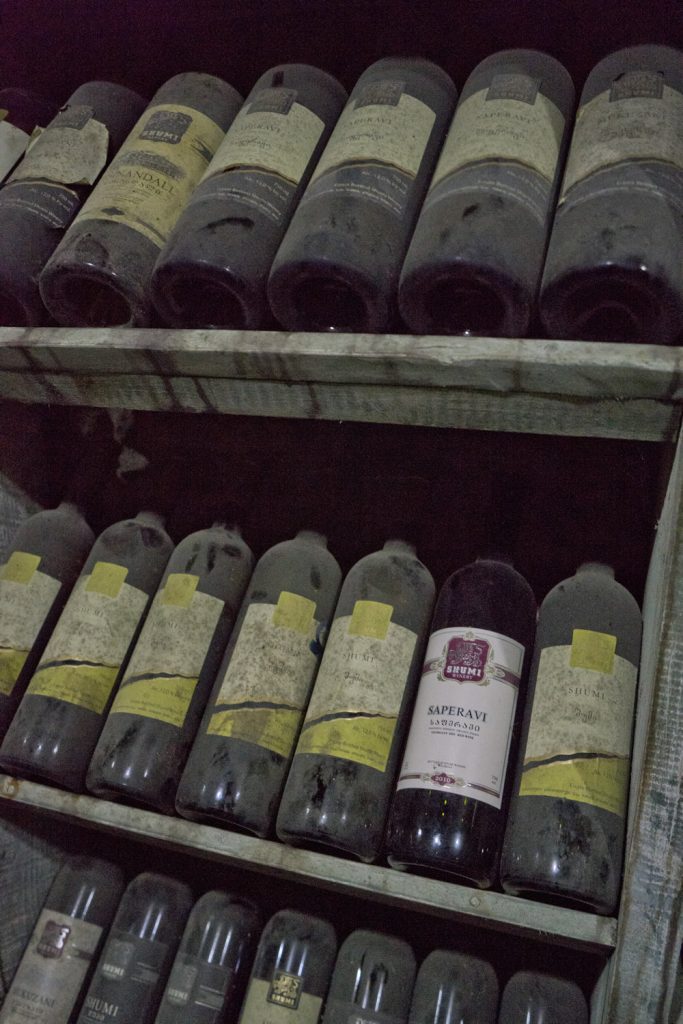[dropcap style=”font-size:100px;color:#992211;”]T[/dropcap]he taxi arrives to my guesthouse at noon, as arranged by my friendly hostess, to drive me a few miles from the historic town of Telavi—the ancient capital of the kingdom of Kakheti and now the hub of the main wine-producing region of Georgia—to the Shumi winery, one of the best in the country.
The estate also has a small museum, which houses a fine collection of winemaking accessories, like ancient grape presses and clay pots. There are more than three hundred varieties of vine on the grounds of the domain, collected by its employees in different areas of Georgia, as well as almost a hundred types of foreign vine, which are used to enrich the local stock.
The roots of Georgian viticulture have been traced back by archaeology to when people of the South Caucasus discovered that wild grape juice turned into wine when it was left buried through the winter in a shallow pit. This knowledge was nourished by experience, and from 6000 BC the inhabitants of present-day Georgia were cultivating grapes and burying clay vessels in which to store their wine ready for serving at ground temperature. Wine vessels of every shape, size and design have been the crucial part of pottery in Georgia for millennia, the most renowned one being the ‘kvevri’, a very large earthenware with an inside coat of beeswax, which attests to the high skill of local craftsmen. When filled with the fermented juice of the harvest, the containers were topped with a wooden lid and then covered and sealed with earth. Some may have remained entombed for up to fifty years.
- © Julio Etchart
- © Julio Etchart
- © Julio Etchart
- © Julio Etchart
- © Julio Etchart
- © Julio Etchart
After visiting the museum, I am escorted to the wine-tasting area at the edge of an exquisitely kept garden to try the main varieties, all accompanied by a set of mouth-watering appetisers: dolma, olives and mushrooms that come with a hearty home-made bread. We start with the dry white Tsinandali, a bright option with an average acidity, which makes a perfect aperitif. Traditionally, red Georgian wines have been predominantly semi-sweet, but, due to the increasing demand from European and American clients, they have concentrated on red dry varietals like the classic Saperavi, a perfectly balanced bottle that is the ideal companion to red meats and game, and the more intriguing Mukuzani, which is designed to be shared in good company over a platter of mezze. We continue with the Veria, the local answer to port, which comes to the table with a great range of regional cheeses, before ending up with the national answer to the Italian grappa, the fiery Chacha, made of grape residues, and which, at 40º proof, gets you ready for a well-deserved nap back at your lodgings.
But before I get too tipsy, I make sure to capture the atmosphere of this enchanting establishment with my cameras, as well as taking a portrait of Akaki Tsopurishvili, the director of Shumi, who is also a high-ranking member of the National Board of Winemakers, and agrees to my request to lean on a huge oak barrel as an apt backdrop to his professional endeavours.

